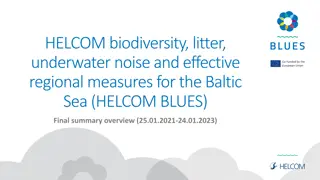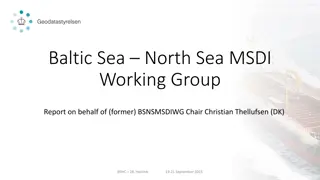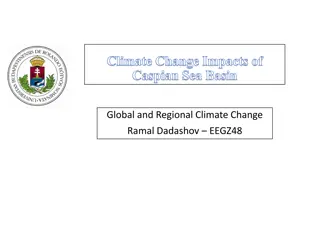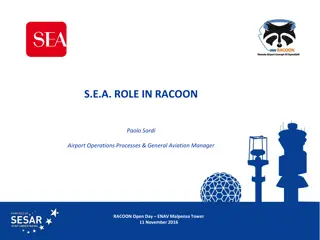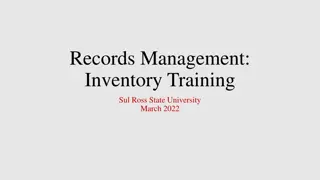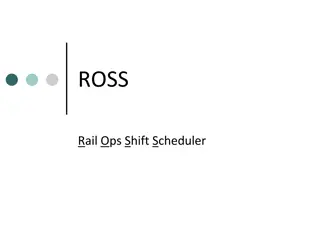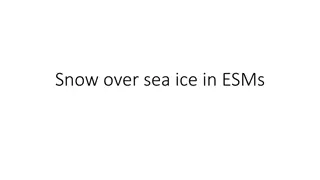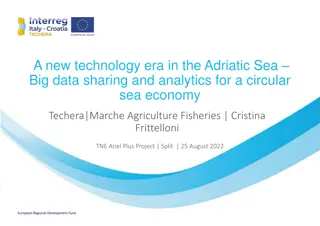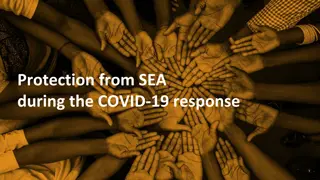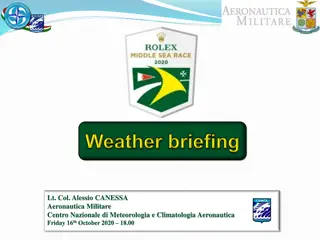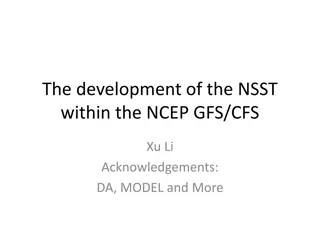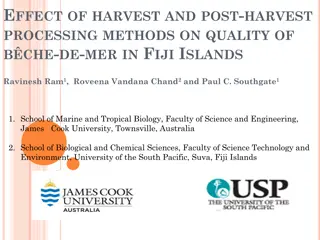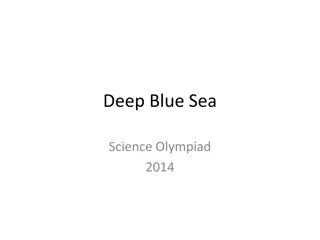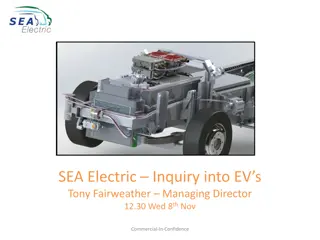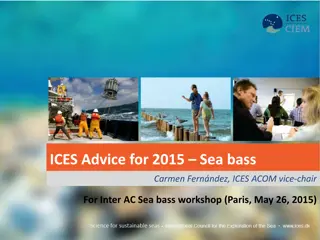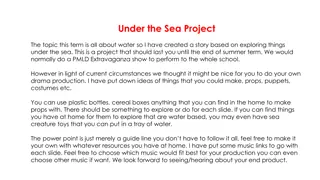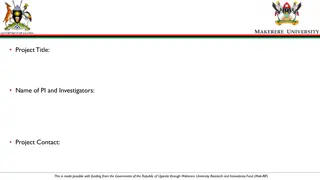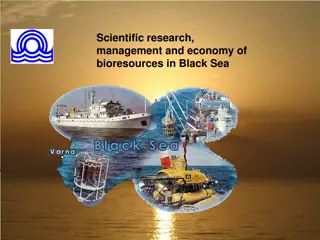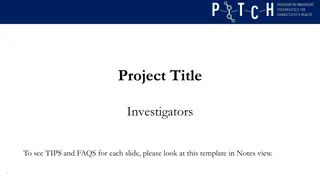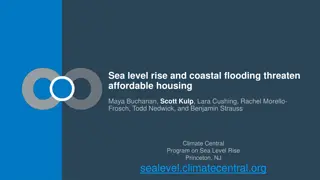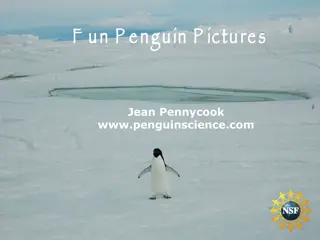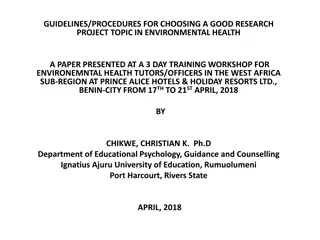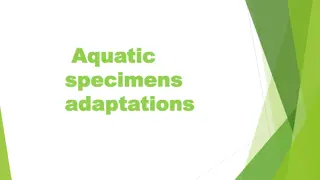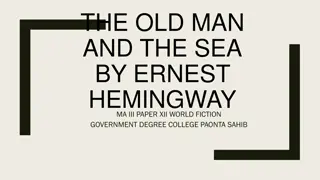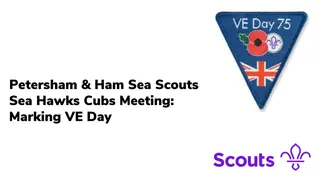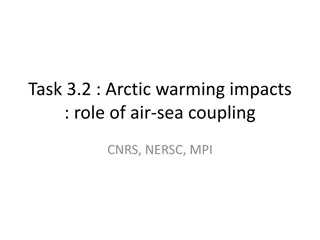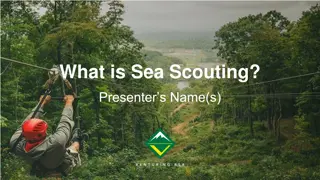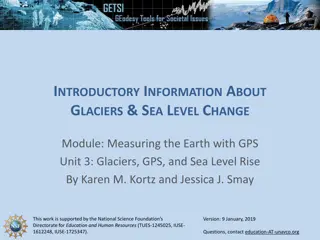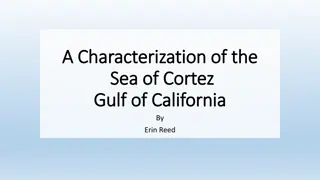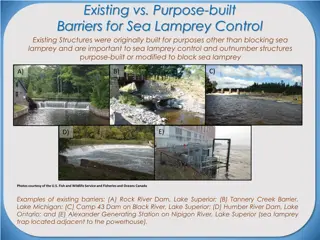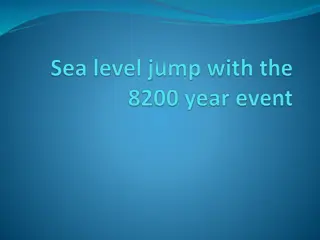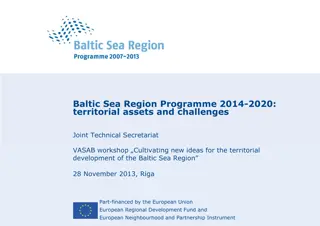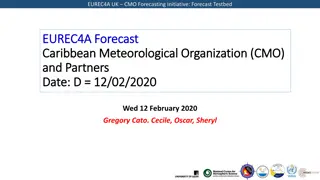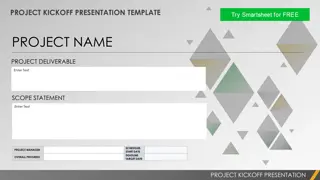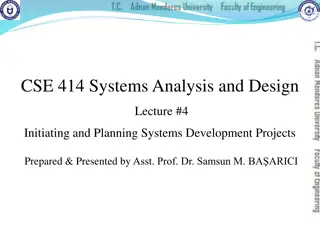PIPERS Research Project in Ross Sea
PIPERS is a research project focusing on polynyas, ice production, and the seasonal evolution in the Ross Sea. The project involves multiple investigators and coordinated programs to improve estimates of sea ice production, water mass transformation, and air-ice-ocean interactions in the region. Goals include capturing the space/time evolution of these interactions, while objectives aim to measure atmospheric and oceanic heat balance, ice growth, and water mass transformation. The PIPERS ship and buoy field program encompasses various measurements, deployments, and observations to gather data on ice properties, biogeochemistry, and more.
Download Presentation

Please find below an Image/Link to download the presentation.
The content on the website is provided AS IS for your information and personal use only. It may not be sold, licensed, or shared on other websites without obtaining consent from the author. Download presentation by click this link. If you encounter any issues during the download, it is possible that the publisher has removed the file from their server.
E N D
Presentation Transcript
Polynyas, Ice Production and its Seasonal Evolution in the Ross Sea (PIPERS) Investigators S.F.Ackley (UTSA, PD), S.Stammerjohn(UColo,PI), J. Cassano(UColo, PI),T. Maksym(WHOI,PI), P.Guest (NPS, PI),R. Bell (LDEO,PI) CoIs: H.Xie, B.Weissling (UTSA), H. Singh (WHOI)
Co-ordinated Programs J.L. Tison and B. Delille (ULB and ULL, Belgium): CO2 Measurements in Antarctic Polynyas and Sea Ice (Pending Funding from Belgian National Antarctic Program for their Cruise Participation) Chris Zappa and Arnold Gordon (LDEO): U.S. Mooring Deployments in the Terra Nova Bay Polynya (Confirmed Support from NSF, Presently Coordinating Timing of year-long moorings with PIPERS Field Measurements year) Italian and Korean National Programs: Collaborative Oceanography (Discussions To Be Initiated in 2014, e.g. Assistance in Mooring Deployment/Recovery, same CTD sections as PIPERS in different seasons) IceBridge: (Possible Coordination, e.g. communication between IceBridge and PIPERS NSF C-130 (IcePod, R.Bell) flight planning for wider Ross Sea regional Lidar coverage in 2015 and 2016; Data set exchanges, etc?) Southwest Research Institute (SwRI): Satellite Radar Coverage (Discussions To be initiated 2014 on TerraSar-X campaign in the Ross Sea, coordinated with field measurements either 2015 or 2016)
PIPERS Goals and Objectives GOALS: Improve estimates of sea ice production and water mass transformation in the Ross Sea. Our principal goal is to fully capture the space/time evolution of air- ice-ocean interactions initiated during autumn and tracked into winter-spring in the Ross Sea. Observations are needed during the rapid growth and expansion phase of the Ross Sea ice cover, both in- and outside the polynyas, and need to also include space/time series of surface forcing and seasonal ice mass balance throughout the winter period that necessarily need to be made autonomously. OBJECTIVES: Obtain precision measurements of the atmospheric and oceanic heat balance at the surface, Determine the effect of katabatic wind surges on low-level warming and ice growth, Measure ocean property changes affecting sensible heat loss and water mass transformation, Concurrent with these air and ocean measurements make observations and measurements of ice growth and ice thickness evolution, Extend detailed measurements through autonomous buoy and aircraft
PIPERS Ship and Buoy Field Program NB Palmer 60 day cruise, April-June (2015 or 2016 tbd), 25-30 Science Party Transit to/from Lyttleton NZ and/or Punta Arenas Chile to Ross Sea continental shelf (Terra Nova Bay and Ross Ice Shelf Polynyas) Occupations and Transits of Terra Nova Bay and Ross Ice Shelf Polynyas including UAV, AUV, Ice Cameras, EMI, Boundary Layer Fluxes and Meteorology, Physical Oceanography, CO2 Fluxes 3 Buoy Array Deployments Inbound and Outbound, Ice Drift, Mass Balance, AWS Sea Ice Time Series at Buoy Arrays, Temp, Snow Depth, Ice Thickness, Ocean Heat Flux, Radiation, Drift, Deformation Sea Ice Properties at Stations and Buoy Sites, Thickness profiles + Cores, Gridded AUV UnderIce Swath Mapping, Surface Elevation Lidar Mapping, Snow Depths at Grid co-ordinates Ocean Ice and Met Obs at Stations, In Transit and on section stations Ice Biogeochemistry and Biology at Station + Core Sampling on Sections for CO2 and related gas fluxes (O2 and Argon) Contemporaneous Satellite Data,
PIPERS Ship Track, Stations and Buoy Array Locations
PIPERS Airborne Program Oct 2015 and Oct 2016 Flights from McMurdo using NSF C-130 mounted with IcePod Measurements by airborne Lidar, digital photography, IR (?), snow radar(?) Two types of Flights: Survey flights of the Ross Sea Flux Gate (1000m IsoBath from eastern edge of Ross Ice Shelf to Cape Adare), one each in 2015 and 2016 Photo-mosaic Swath mapping of three buoy arrays (~ 20km x20km each) in year available (either 2015 or 2016, tbd)




